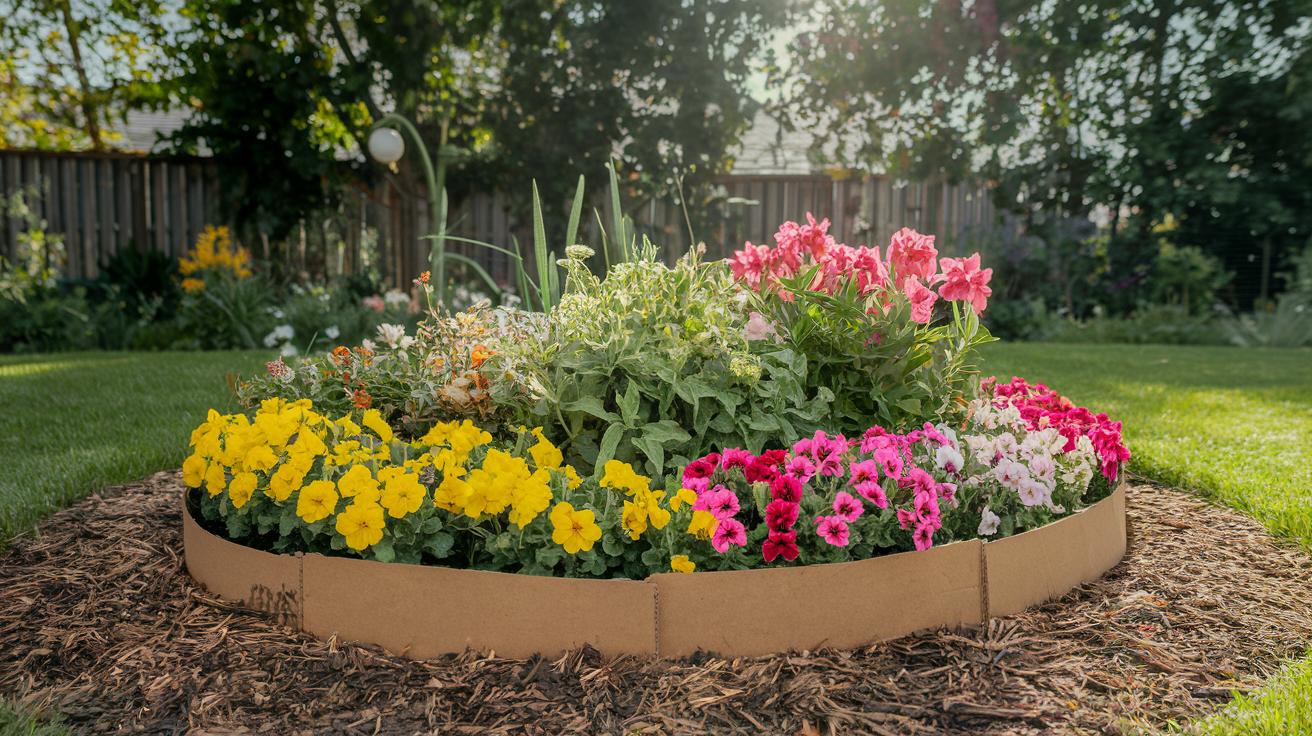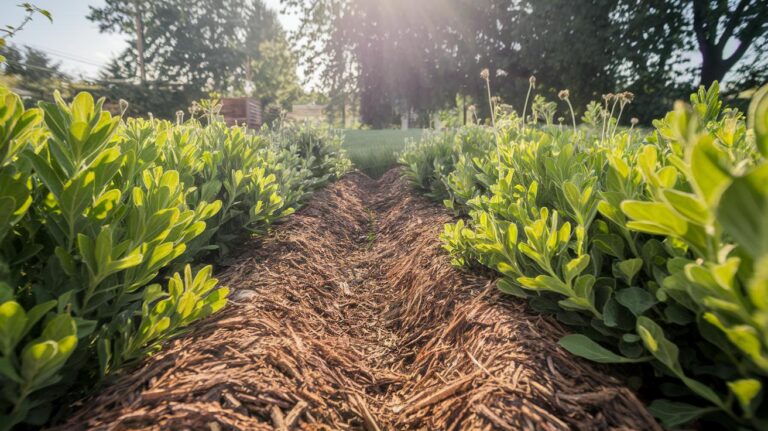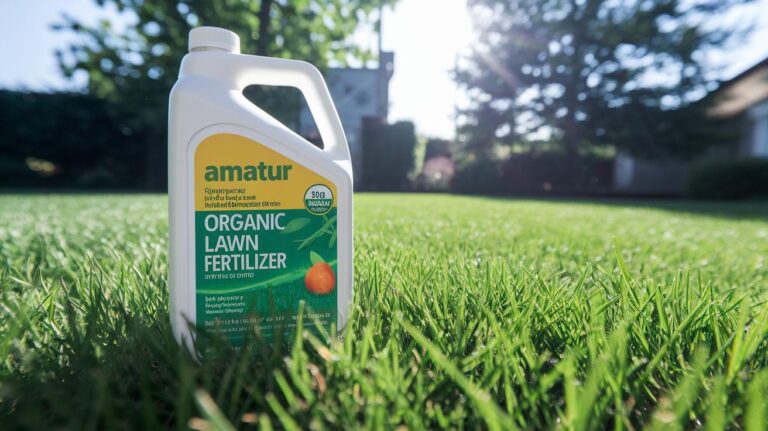Organic Lawn Weed Control Methods: Amazing DIY Guide
Picture a lush, green lawn free of dandelions. Think you need tough chemicals to make that happen? Nope!
Grab your gloves and let’s walk through a simple, three-step routine that kicks out weeds without any harsh stuff. It’s easier than you might think.
First, step out on a cool, dewy morning when the grass feels damp under your feet. Look for dandelions and chickweed (small, low-growing weed) before they spread their fluffy seeds.
Next, grab each weed by the base and give it a gentle tug to pull up the roots. Or mist young sprouts with a quick vinegar spray to wilt them fast. Oops, I mean don’t soak your lawn. Just a light spritz and watch the weed wilt.
Finally, help your grass thicken up so weeds can’t sneak in. Spread extra grass seed (overseeding: planting more grass seed) across bare spots, then top it off with a thin layer of compost (decayed plant bits that nourish soil). Then poke tiny holes in the earth (aeration: making little soil vents) so water and air reach the roots. You’ll end up with a dense, healthy lawn that leaves no room for dandelions.
Overview of Organic Lawn Weed Control Methods
Organic weed control is all about a simple three-step routine that helps you grow a lush, green lawn without a drop of chemicals. It’s kind of like giving your yard a gentle spa day. Ready to get started?
Step one is all about spotting weeds early. Take a slow walk on a cool, dewy morning when the grass feels soft under your feet. By checking for stray dandelions and chickweed before they spread seeds, you stay one step ahead.
Next, let’s gently remove the ones you find. Use a hand weeder (a small tool for pulling weeds), a dandelion fork, or even your favorite weeding knife. And you know, a simple vinegar spray makes a quick spot treatment that zaps young weeds without harming your grass.
Third, strengthen your grass so it crowds out newbies before they sprout. Think overseeding (planting extra grass seed), compost topdressing (a thin layer of decayed organic matter), and aeration (making little holes so air and water reach roots). Oops, I meant core aeration, just use a spike or plug aerator. These steps build a rock-solid turf that weeds hate.
Unlike fast-acting herbicides that scorch leaves and wash into streams, this approach feeds earthworms and friendly microbes below the surface. You’re boosting soil life instead of harming it.
Learning to recognize weeds by leaf shape and bloom time makes early removal a breeze. Have you ever noticed how clover’s little three-leaf clusters look so different from creeping buttercup’s scalloped edges?
Soon, I’ll share how to hand-pull with the right wrist twist, whip up a simple vinegar spray, and dab on safe spot treatments that zap weeds on sight. Stay tuned for those easy tricks!
Doing these organic habits cuts runoff, enriches soil life, and gives you long-term lawn health without harsh chemicals. Planting this routine now sets you up for a summer full of soft, green grass under bare feet.
Identifying Common Lawn Weeds and Prioritizing Control

Have you ever knelt in your yard and spotted a bright yellow dandelion peeking up? Learning to recognize weeds by sight helps you stop them before they scatter seeds. The chart below shows five lawn visitors you’ll want to know and how to spot them fast!
| Weed Name | Type | Key ID Feature |
|---|---|---|
| Dandelion | Broadleaf (flat-leaf plant) | Tooth-edged leaves and a sunny yellow flower |
| Plantain | Broadleaf (flat-leaf plant) | Oval leaves with parallel veins |
| Chickweed | Broadleaf (flat-leaf plant) | Tiny white star-shaped blooms |
| Crabgrass | Grassy (grass-like plant) | Low clumps of wide blades |
| Nutsedge | Sedge (grass-like plant) | Glossy blade and a triangular stem |
Now let’s tackle broadleaf weeds. These flat-leaf plants hide deep taproots that bend if you pull too fast. So wait until the soil (loose earth) is damp, then grip at the base, twist gently, and lift the whole root. Oops, I once pulled too soon and the root snapped off – extra work.
Next up are grassy weeds like crabgrass, which loves warm ground and bare spots, and it spreads in wide clumps if you’re not watching. As soon as spring hits, fill empty patches with grass seed or a layer of mulch to slow it down. Nutsedge, that sneaky sedge (grass-like plant), pops up in soggy areas with underground runners. Pull it up right away before it makes more trouble below ground.
Early spring is prime time for your first check. When the earth warms under your feet, scout for new shoots instead of waiting for big weeds to show off. Spotting tiny greens now saves you hours of work later. And hey, fewer weeds means more time to relax and enjoy your lawn.
Manual Weed Removal Techniques for Lawns
Wait until the soil feels soft and damp, like a sponge after a rain.
Kneel on a foam mat so your knees stay comfy and you can lean in close.
Grip each weed at its base, right where the stem meets the ground. Twist gently and pull straight up so you lift out the taproot (main root that goes deep into the ground). Feel the satisfying pop when the whole root comes free.
| Tool | What It Does | Quick Tip |
|---|---|---|
| Stirrup hoe | Slides under tiny weeds to slice surface roots. | Use a push-and-pull motion for best results. |
| Dandelion digger | Reaches deep taproots of flatleaf weeds. | Poke beside the root, then lever out gently. |
| Long-handled weeder | Lets you stand upright to save your back. | Shift your weight from foot to foot as you pull. |
| Pulling gloves | Grip slippery stems and protect hands. | Rinse off mud after, don’t let it bake on. |
Pull weeds before they flower so they can’t spread seeds all over your lawn.
Organic Herbicide Alternatives and DIY Weed Killers

When store-bought sprays aren’t an option, you can whip up homemade weed killers that clear unwanted plants without harsh chemicals. They’re cheap and give you full control. Here are four simple recipes, how to mix them, and the best time to use.
Vinegar Weed Treatment
Mix equal parts 10–20% acetic acid vinegar (vinegar with extra punch) and water. Stir in ½ teaspoon dish soap per quart so the spray clings to leaves. Spray weeds in a sun-warmed midday when they’re sipping up heat.
Pros: leaves brown fast; super easy to mix.
Cons: nonselective – it can harm grass; tough weeds may need a second round.
Corn Gluten Meal Application
Spread 20 pounds of corn gluten meal (a byproduct of milling corn) over 1,000 sq ft about one to two weeks before seedlings peek through. Lightly rake it into bare soil so it stays put. This trick blocks new seeds and adds a bit of nitrogen.
Pros: stops tiny seeds from sprouting; gives soil a nutrient boost.
Cons: won’t remove existing weeds; needs moist soil to work.
By the way, I use corn gluten meal to prevent garden weeds and it really helps.
Boiling Water Method
Carefully pour boiling water right at the weed’s base. Perfect for cracks in driveways or along stone paths.
Pros: zaps roots instantly; no chemical trace left.
Cons: can scald nearby grass or plants; aim with care.
Essential Oil Spray
Combine 10 drops of clove or orange oil (plant extract) with 1 quart water and ½ teaspoon dish soap. Shake it up and mist leaves on a dry, calm morning. Oops, spilled a bit when I was testing – no harm done though.
Pros: smells nice; natural oils speed leaf death.
Cons: oils can stain surfaces; pricier than vinegar.
Mix and match these DIY weed killers to suit your backyard. Small patches and young sprouts are easiest to clear.
Catching them now makes spot treatment a breeze.
Enhancing Soil Health and Cultural Practices to Prevent Weeds
Ever checked your lawn’s soil pH? Aim for 6.2 to 7.0. If it dips below, work in a little garden lime and if it goes above, sprinkle on some sulfur. These tweaks help grass outgrow weeds.
Once a year in spring or fall, core-aerate your yard. The manual lawn aeration method pulls tiny plugs from the ground. You’ll feel the earth give way underfoot as air, water, and nutrients slip in. Your grass roots stretch out and helpful soil critters get busy.
Got a thick layer of old stems and roots (thatch)? Dethatch in early autumn. It’s like giving your lawn a haircut. Pulling out matted debris lets seedlings and grass shoots sink roots deep.
Topdress next. Spread about 1/8 inch of compost (decayed organic matter that enriches soil) across the turf and you might hear a soft pat as it lands. It feeds friendly microbes. Then scatter 5 pounds of grass seed per 1,000 square feet and gently rake so seeds hug the soil.
Set your mower blade to 3 to 4 inches and sharpen it every 20 hours of cutting. Taller grass shades the soil and keeps weeds in the dark. Sharp blades give clean cuts that heal quickly. No more ragged edges.
Water deeply once a week (about one inch total). Morning watering is best so roots drink before the heat hits. I’ve seen lawns perk up overnight with this simple step. And it keeps drought stress, which weeds thrive on, at bay.
Finally, feed your grass with a slow-release organic fertilizer like seaweed extract or fish emulsion. It’s like a steady snack for your turf. That steady growth crowds out pesky weeds. You’ll enjoy a thicker, greener lawn.
Mulching, Barriers, and Seasonal Maintenance Schedule

Got weeds sneaking under your flower bed edges? Mulch is your secret weapon, you know? Spread a fluffy 2-3 inches of shredded bark, straw, or cocoa hulls (the shells left after roasting cocoa beans) along borders and paths. You’ll feel its soft cushion in your hands and see it block those pesky seeds. And for busy walkways, I like rolling out landscape fabric (a sturdy cloth that stops weeds) or laying jute or paper matting. They let water and air through but keep weeds at bay, no plastic involved.
See a bare patch in your lawn? Grab some cardboard or stack a few sheets of newspaper. Wet them down, then sprinkle a thin layer of compost (decayed organic matter that enriches soil) before you top with grass seed. It’s like tucking seeds into a cozy bed so they wake up strong and even.
Here’s a simple, all-season plan to keep your yard looking its best:
- Spring: Spread corn gluten meal (an organic pre-emergent that stops weed seeds) around thin spots. Then toss down grass seed where your lawn needs a boost.
- Summer: On dry, calm days, pull broadleaf weeds by hand or give them a quick vinegar spray.
- Fall: Rake up matted grass and roots (that’s dethatching), then poke holes in the soil with a core aerator (a tool that makes tiny plugs). Top it off with compost and seed.
- Winter: Rake away fallen leaves and plan soil tests and amendments for early spring.
By the way, my cat loves to sunbathe on fresh mulch! Stick to this mulch, barrier, and seasonal rhythm. You’ll spend less time weeding and more time enjoying that soft green carpet under your feet.
Selecting Weed-Resistant Grass Varieties and Turf Renovation
Hey neighbor, ready to kick out pesky weeds and grow a tougher lawn? For a full, step-by-step lawn makeover, check out our Mulching & Turf-Renovation guide.
Picking a Weed-Fighting Grass Mix
Try a blend that stands up to weeds and tough weather.
- Tall fescue (grass with deep roots that help it grow in shady spots and dry spells)
- Perennial ryegrass (grass that sprouts fast to fill in bare patches)
- Buffalo grass (warm-weather grass that stays green once its roots are set)
| Grass | Percentage |
|---|---|
| Tall fescue | 70% |
| Perennial ryegrass | 30% |
Use about 5 pounds of seed for every 1,000 square feet (around 1.6 kilos per 100 square meters). That’s your seeding rate (how much seed you spread over a set area).
Keep the topsoil lightly damp until you see little green sprouts. You’ll usually spot them in 7 to 14 days. Then water every other day so roots dig deep and your lawn stands strong.
Final Words
You’ve learned how to spot dandelions, crabgrass, and creeping charlie before they take over.
You’ve got the scoop on hand-pulling, natural sprays, and corn gluten meal to zap existing weeds without harsh toxins.
You’ve seen how compost topdressing, proper mowing, and turf choices keep grass thick and weeds out.
Stick to this seasonal rhythm.
Mulch edges in spring and spot-treat in summer.
Aerate in fall and rest in winter.
Keep at it.
Here’s to enjoying a lush, chemical-free yard using organic lawn weed control methods for seasons to come!
FAQ
What methods are used for organic weed control in lawns?
Organic weed control methods include a three-step plan: spot weeds by type, remove them without synthetic chemicals, and build a deep, healthy lawn that crowds out weeds.
How do I identify common lawn weeds and their types?
To identify common lawn weeds look at leaf shape, growth pattern, and bloom time. Broadleaf weeds like dandelions have flat leaves. Grassy weeds like crabgrass grow in clumps. Check early spring.
When is the best time to hand-pull weeds for effective removal?
The best time to hand-pull weeds is after rain or light watering when soil is soft. Pull before flowers open to lift entire roots and stop seed spread.
How can I make a homemade vinegar weed killer?
Mix equal parts of 10–20% acetic acid vinegar and water, add half a teaspoon of dish soap per quart, and spray on sunlit weeds at midday for best burn.
How do I use corn gluten meal as a pre-emergent control?
Apply corn gluten meal at 20 pounds per 1,000 square feet, one to two weeks before weeds sprout. It blocks seed germination in your lawn without chemicals.
What soil and lawn care practices help prevent future weeds?
Healthy soil and lawn care include testing pH and aiming for 6.2–7.0, aerating yearly, topdressing with a thin layer of compost, mowing at three to four inches, and deep weekly watering.
What is the seasonal schedule for organic weed control tasks?
Spring: apply corn gluten meal and seed bare spots. Summer: spot-treat broadleaf weeds. Fall: dethatch, aerate, and topdress. Winter: clear debris and plan spring amendments.
Which grass varieties resist weeds and how do I renovate an infested lawn?
Weed-resistant grasses include tall fescue for shade, perennial rye for quick cover, and buffalo grass for heat. To renovate, smother weeds, amend soil with compost, seed, mulch lightly, and water daily until green.







